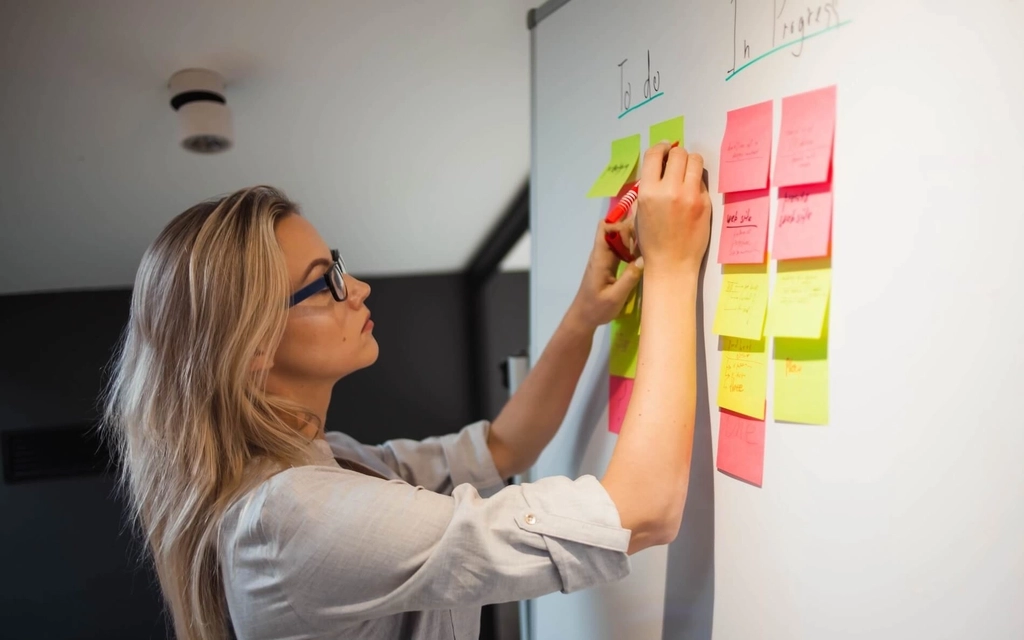
In this guide
The complete guide to usability testing
The complete guide to usability testing
If you've ever spoken to your users about how they interact with your product, chances are you've probably conducted some method of usability testing.
In this comprehensive guide to usability testing, we'll take you beyond usability testing basics, diving into the importance of usability testing and how the process works.
You'll explore different types of usability testing methods, review examples illustrating their application, and receive guidance on formulating the right usability testing questions to get the answers you need.
You'll also have access to practical usability testing templates and checklists and learn actionable tips to conduct more successful usability testing sessions. Finally, you'll learn about several essential usability tools to enhance your testing efforts.
What is usability testing?
Usability testing is a form of user research in which product design teams observe test participants as they interact with a product or user interface to achieve a goal or specified task. This allows product and design teams to examine their product’s functionality and intuitiveness based on user actions and responses.
Whether you choose simple methods such as reviewing session recordings or more comprehensive approaches such as tracking eye movements, usability testing is an essential phase in product design and development.
It allows your product, design, and engineering teams to create a product experience that users will find efficient, useful, and enjoyable.
The goal is to find usability issues, understand user behavior, and collect feedback to improve the product. This helps product designers and UX researchers find areas where users struggle or get confused. They then gather this data to help improve the product’s design.
To start our exploration of usability testing, let’s begin the two highest level types of data usability testing can produce.

Definition and purpose of usability testing
Usability testing is a cornerstone of user experience (UX) research, where real users interact with a product or website to evaluate its ease of use and overall experience.
The primary purpose of usability testing is to uncover design flaws, identify areas for improvement, and find opportunities to enhance the user experience.
By observing how actual users navigate and use the product, designers and product teams can gain invaluable insights into user behavior, pinpoint pain points, and make informed, data-driven decisions to refine the product’s usability. This iterative process ensures that the final product is intuitive, user-friendly, and meets the needs of its target audience.
Benefits of usability testing
Usability testing offers many benefits that can significantly impact the success of a product. Here are some key advantages:
- Identify design flaws early: Usability testing helps reduce the risk of costly rework later in the development process by catching design issues early on.
- Improve user satisfaction: A more intuitive and user-friendly product leads to higher user satisfaction and engagement, fostering a positive user experience.
- Enhance overall user experience: Usability testing provides insights that help create a seamless and enjoyable user experience, which can increase customer loyalty and retention.
- Inform design decisions: Observing user behavior and preferences during testing provides valuable data that can guide design decisions and product development.
- Reduce launch risks: Identifying and addressing usability issues before launch minimizes the risk of releasing a product that could negatively impact brand reputation and customer trust.

Qualitative vs. quantitative usability testing
Depending on the testing methods and sample sizes collected, usability testing can result in two different types of data: quantitative and qualitative.
Qualitative usability testing focuses on understanding the reasons behind user behavior and gathering insights about users' experiences, thoughts, and feelings during product interaction.
Quantitative usability testing focuses on collecting and analyzing numerical data such as success rates and error rates.
Quantitative usability testing data
Quantitative testing is the collection and analysis of numerical data. It aims to find patterns and averages, make predictions, test causal relationships, and generalize results to broader populations by representing data expressed as numbers. Quantitative testing often employs surveys, questionnaires, or analytics tools to gather data from a larger sample size.
Advantages of quantitative usability testing include scalability and efficiency, as it can quickly generate data from a large number of participants. A quantitative approach provides product design teams with precise, measurable results that are easily interpreted and compared across different iterations or designs.
However, quantitative testing may lack the depth of qualitative insights due to its use of numerical metrics rather than the underlying reasons behind user behavior.
Qualitative usability testing data
Qualitative usability testing relies on non-numerical data derived from observations and recordings that approximate and characterizes phenomena. It means collecting, analyzing, and interpreting non-numerical data, such as language in order to understand the why behind quantitative data. They're two sides of the same coin.
Qualitative usability testing seeks to understand how an individual subjectively perceives and gives meaning to their social reality. During qualitative testing, researchers may use in-depth interviews to explore participants' perceptions and feelings in depth.
A qualitative approach allows for a nuanced understanding of user needs and motivations, which can inform iterative design improvements.
How does usability testing improve digital products?
Usability testing provides critical insights into how real users interact with the product and identifies areas for enhancement. Usability testing qualitative insights are crucial for understanding user interactions and experiences, which can inform design improvements. Let’s dive deeper into the benefits of usability testing for UX teams.
Identify user pain points
Usability testing allows designers and product teams to observe test participants interacting with the experience in real time.
This will enable them to identify any pain points or frustration users encounter while navigating the site. For example, confusing navigation, unclear instructions, or functionality that doesn't meet users' expectations could be highlighted.
Validate design decisions
Testing hypotheses and design iterations with real users helps validate design decisions. Designers can observe how test participants interact with different design elements to determine which design approaches are practical and which may need adjustment or refinement.
Usability testing can uncover issues with website navigation and information architecture, such as confusing menu structures or difficulty finding important content. Identifying these issues allows product teams to optimize the website's navigation, making it more intuitive and user-friendly.
Enhance accessibility
An essential benefit of usability testing is that it can spotlight accessibility issues that may affect users with disabilities.
Testing the website with diverse user groups, including those with different abilities, allows product teams to identify accessibility barriers and make improvements to ensure the experience is inclusive and accessible to all users.
When should you do usability testing?
When it comes to when you should do usability testing, the short answer is early and often. Usability testing is an iterative process from the prototyping phase to the post-launch.
Before making any design decisions, test your low-effort prototypes at the conceptual stage. This reveals user feedback and pain points that you can work to resolve. However, it doesn't stop there.
Test at every phase of the product development cycle to learn user behavior and understand what works well, what needs improvement, and how you can fix it.
Continuously testing keeps your customer at the forefront and enables you to design products with vast human insight.
4 fundamental types of usability tests
While there are many methods of usability testing, they all fall under four fundamental test types: in-person testing, remote testing, moderated testing, and unmoderated testing.
Understanding these high-level usability test types and coupling that knowledge with consideration of your goals, budget, and timeline will help you chart the best path forward.
Remote usability testing vs. in-person usability testing
When putting together usability tests, one of the first decisions is whether you'll be running your usability tests remotely or in person. Let's look at the differences.
Remote user testing
During remote usability testing, participants complete tasks and provide feedback from their location, typically using online testing platforms or software. Because participants use their own devices in familiar environments, this can provide more natural and realistic user interactions.
This testing method allows for a broader reach in test audience sample size and participant recruitment, as users can participate from any location with internet access. It offers flexibility in scheduling, allowing participants to complete tests at their convenience and reducing the need to coordinate in-person sessions.
Conversely, it may lack the ability to directly observe and interact with actual users, which can make it challenging to gather nuanced insights.
In-person user testing
In-person user testing involves participants completing tasks and providing feedback in a physical location such as a usability lab or conference room. In this location, a facilitator or moderator can observe participants' behavior, gestures, and reactions in real time, allowing for deeper insights and understanding.
In-person testing allows for immediate clarification and follow-up questions, which can lead to richer qualitative data. It facilitates a more controlled environment where teams can effectively manage factors such as equipment setup and environmental distractions.
It's important to remember, though, that in-person testing may be more resource-intensive in terms of facilities, equipment, and participant coordination, and it may limit your reach to participants who can travel to the testing location.

Moderated vs. unmoderated usability testing
After selecting a remote or in-person usability test, the next important decision when putting together a test is whether you'll be directly involved in the testing or if participants can access the test on their own. We call these two types of tests moderated and unmoderated usability testing. Let's look at the differences and applications of each.
Moderated testing
During moderated usability testing, a facilitator or moderator guides participants through the process. The moderator can provide instructions, ask questions, and gather additional insights from participants in real time.
This approach allows for more in-depth observation and understanding of user behaviors and reactions. Participants may feel more comfortable sharing their thoughts and feedback with a moderator present.
Researchers conduct moderated testing in a controlled environment, such as a usability lab conference room or a remote usability platform allowing live moderation.

Moderated usability testing use cases:
- Validate high-level concepts: Whether it's an early-stage prototype or just a one-page concept, you can use moderated studies to validate your ideas with people and gauge whether they're worth pursuing further.
- Test complex products: Some solutions are too difficult to explain through written instructions. Moderated testing is your best bet if you want to be "in the room" with your user.
Formulate and refine your research hypotheses: One of the most important phases of research involves developing a hypothesis about how users expect to interact with your product based on historical data and personas.
Moderated usability testing allows you to refine these hypotheses granularly. In the long run, this helps you create research projects that are clearly defined and rock solid.
- Create UX advocates: Inviting stakeholders to observe moderated sessions is a surefire way to showcase the value of usability testing. You'll be amazed at the levels of empathy your stakeholders build.
Test logged-in environments: Most websites and applications require users to create a dedicated log-in account, making it challenging to test logged-in settings.
Moderated studies can help you to overcome this difficulty. For example, you can have a moderator log in and then pass control over to the tester.
Unmoderated usability testing
Unmoderated usability testing involves participants completing tasks and providing feedback independently without a moderator present. Participants follow predefined tasks and instructions using remote testing platforms or software.
An unmoderated approach offers flexibility in terms of timing and participant location. Participants can complete tests at their convenience.
Unmoderated testing can be more cost-effective and efficient for gathering feedback from many participants. However, compared to moderated testing, there may be less opportunity for in-depth probing and follow-up questions that emerge in the moment.
Unmoderated testing use cases:
- Meeting Agile demands: Agile is the name of the game today. Engineers and product managers often wait for your UX insights, so you need to deliver them stat. In this fast-paced environment, unmoderated studies facilitate the need for speed.
- Scale your research: Larger sample sizes yield statistical significance. Because remote usability testing leaves users to their own devices (literally), you can better scale your project, potentially including hundreds of people.
- Use quantitative data to cement qualitative insights: Qualitative and quantitative research don't have to be mutually exclusive—they can work great together. For example, you could run a qualitative study and discover that a handful of users aren't satisfied with a design feature. You can then use a large-scale quantitative test to prove or disprove this insight.
- Democratize UX insights: The demand for UX research is higher than ever. You only have 24 hours daily, one team can't run every research project needed. People from other departments and roles can engage in research with supervised, unmoderated research. With the right platform and some training, empower your colleagues to run their own remote usability testing at speed and scale when possible.
- Find your tribe: Unmoderated usability testing allows you to gain feedback from participants anywhere in the world. Whether you need a geographically dispersed sample size or need to reach a specific group of people with your product, remote usability testing has your back.
How to conduct usability testing
Conducting usability testing involves several key steps to ensure you gather meaningful and actionable insights. Here’s a step-by-step guide:
1. Define a goal and target audience to usability test
Before conducting usability testing, it’s crucial to define the goal of the test and identify your target audience. Determine the specific aspects of the product or website you want to evaluate, the user tasks you aim to observe, and the type of users you need to recruit.
Having a clear goal and understanding your target audience will help you create a focused test plan and ensure that the data you collect is relevant and actionable.
2. Establish usability testing evaluation criteria
Setting clear evaluation criteria is essential for an effective usability test. Decide on the metrics you want to measure, such as task completion rates, user satisfaction, and error rates.
Additionally, establish criteria for evaluating user behavior and identifying usability issues. This structured approach will help you systematically assess the product’s usability and gather valuable insights.
3. Create a usability testing script
A well-crafted usability testing script is vital for conducting consistent and reliable tests. Your script should include:
- Introduction and instructions: Provide a clear introduction and instructions for the participant to set the context.
- Usability testing task list: Outline a series of tasks for the participant to complete, along with any relevant scenarios or context.
- Usability test questions and prompts: Include questions and prompts to gather additional insights and user testing feedback from the participant.
- Debriefing session: Plan a user testing debriefing session to collect final thoughts and feedback from the participant.
Following a detailed usability testing script ensures that usability tests are conducted consistently and the data collected is reliable and actionable.
By integrating these new sections, the article will provide a comprehensive and detailed guide to usability testing, covering its definition, benefits, and practical steps for conducting effective tests.
Next up: 17 usability testing methods you should know
From focus groups to guerrilla testing, learn when to use certain usability testing methods over others with these 17 methods.